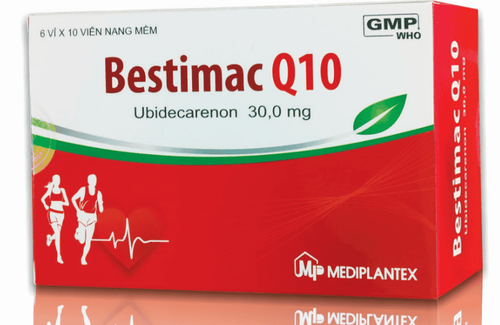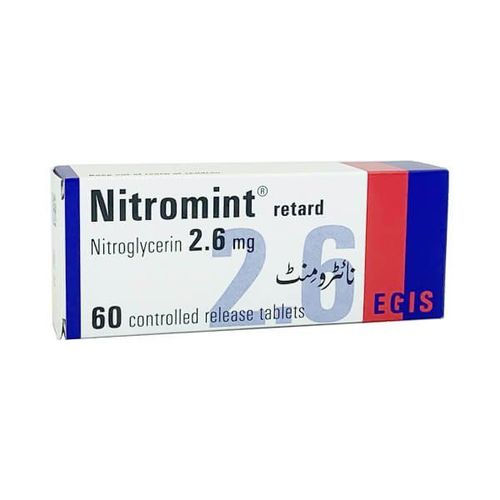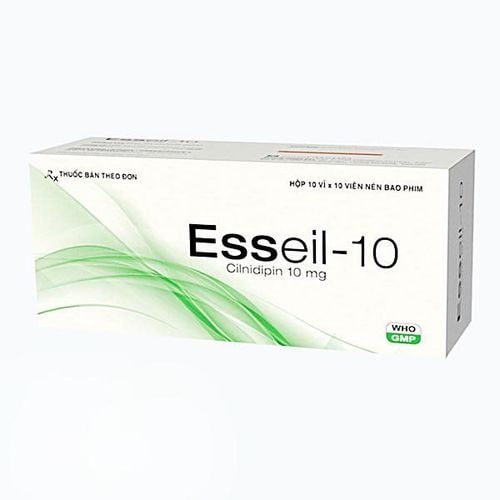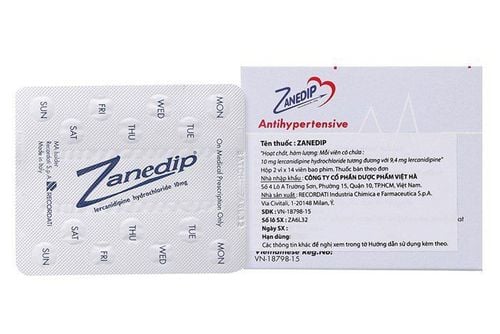This is an automatically translated article.
Aldactone drug has the main ingredient is Spironolactone. It is an idiopathic hypertension drug for short-term preoperative treatment of primary hyperaldosteronism, congestive heart failure, and conditions in which secondary hyperaldosteronism may occur.
1. What is Aldactone? Aldactone drug forms
The active ingredient Aldactone is Spironolactone. This is a potassium-sparing diuretic, a competitive aldosterone antagonist. The drug acts on the distal tubule of the kidney, inhibits the effect of water and Na + retention and inhibits the K + elimination effect of the drug Aldosterone. The active ingredient Spironolactone not only increases the excretion of Na+ and Cl- and reduces the elimination of K+, but also inhibits the excretion of H+ into the urine. Due to the above mechanism of action, spironolactone has both diuretic and antihypertensive effects. Aldactone can be used alone or in combination with other diuretics acting on the proximal tubule.Some forms of Aldactone may be encountered such as:
Aldactone 25 mg tablets; Aldactone Tablets 50mg.
2. What diseases and side effects does Aldactone 25mg treat?
2.1. What diseases does Aldactone treat? Aldactone is indicated for treatment in the following cases:
Treatment of essential hypertension. Short-term preoperative treatment for people with primary hyperaldosteronism. Congestive heart failure is dosed alone or in combination with standard therapy. Conditions in which secondary hyperaldosteronism may occur, including cirrhosis associated with edema and/or ascites, nephrotic syndrome, and other edematous states (dose alone or in combination with therapy). standard value). Adjunctive therapy when used with diuretics causing hypokalemia/hypomagnesemia. Establish the diagnosis of primary hyperaldosteronism. Control hirsutism. 2.2. Side effects of the drug Aldactone The long-term use of Aldactone can have the following undesirable effects:
Benign, malignant and non-specific tumors (including cysts and polyps): benign breast. Blood and lymphatic system disorders such as leukopenia including agranulocytosis and thrombocytopenia. Metabolism and nutrition disorders: electrolyte disturbances, hyperkalemia. Psychiatric disorders: altered sexual ability, forgetfulness. Nervous system disorders: dizziness. Digestive system disorders: gastrointestinal disturbances, nausea, vomiting. Hepatobiliary dysfunction: abnormalities in laboratory tests of liver function. Skin and subcutaneous tissue disorders: Stevens-Johnson syndrome (SJS), toxic epidermal necrolysis (TEN), drug-induced rash with eosinophilia, alopecia, hirsutism, pruritus, rash or urticaria. Musculoskeletal and connective tissue disorders: cramps in the extremities. Renal and urinary disorders: pathology of acute renal failure. Reproductive system and mammary gland disorders: breast pain, menstrual disorders in women, gynecomastia in men. However, gynecomastia in men is usually reversible upon complete discontinuation of treatment, although in very rare cases mammary gland enlargement remains. General and local disorders: feeling of great fatigue or weakness. Rarely, systemic side effects such as maculopapular or erythematous rash, gastrointestinal disturbances (vomiting, nausea, diarrhea, gastrointestinal bleeding, peptic ulcer, gastritis), central nervous system disorders central nervous system (ataxia, somnolence, headache), agranulocytosis. These side effects usually disappear when treatment with Aldactone is stopped.
3. Dosage and how to take Aldactone
3.1. Treatment of hyperaldosteronism Oral 100-400mg/day before surgery. In cases where surgery is not suitable, long-term maintenance therapy should be initiated with the minimum effective dose determined for the individual. In this case, the starting dose may be reduced every 14 days until the minimum effective therapeutic dose is reached. During long-term treatment, doctors often prescribe Aldactone in combination with other diuretics to reduce unwanted effects.
3.2. Treatment of edema (congestive heart failure, cirrhosis or nephrotic syndrome): For adults:
The usual starting dose is 100mg/day, divided equally in two doses, but can be used from 25-200mg/day . At higher therapeutic doses, Aldactone should be used in combination with another diuretic, preferably with a diuretic that acts on the proximal tubule. In this case, the therapeutic dose with Aldactone remains unchanged. For children: 3.0 mg/kg body weight/day, divided into 2 times, or taken as 1 time.
3.3. Treatment of high blood pressure: Initial dose is 50-100mg / day, divided into 2 times and combined with other antihypertensive drugs. Aldactone treatment continuously for at least 2 weeks. The reason is that the maximum antihypertensive effect can be achieved only after 2 weeks of treatment. After that, doctors usually adjust the dose according to the individual.
3.4. Hypokalemia The daily dose varies from 25-100mg, if oral K+ cannot be provided or other methods of potassium retention cannot be used.
4. Aldactone drug interactions
Drugs that increase blood potassium: Concomitant use of Aldactone with drugs that cause hyperkalemia can lead to severe hyperkalemia. Diuretics and other antihypertensive agents: The effect of Aldactone may be increased when used concomitantly with diuretics and other antihypertensive agents. The treating physician usually reduces the therapeutic dose of these drugs when Aldactone is added to the regimen. Norepinephrine: Aldactone reduces the vascular response to Norepinephrine. Digoxin: It has been reported that Aldactone increases the half-life of digoxin. The active ingredient Spironolactone may interfere with the quantification of digoxin plasma concentrations. Nonsteroidal anti-inflammatory drugs such as indomethacin, aspirin, and mefenamic acid may reduce the effectiveness of diuretics in urinary sodium excretion. It is caused by drugs that inhibit the synthesis of prostaglandins in the kidney and reduce the diuretic effect of spironolactone. Antipyrine: Aldactone increases the metabolism of Antipyrin. Ammonium chloride: Hyperkalemic metabolic acidosis has been reported in patients receiving concomitant treatment with Aldactone with ammonium chloride or cholestyramine. Concomitant administration of Aldactone with carbenoxolone may lead to a decrease in the therapeutic effect of either drug.
5. Some notes when using Aldactone
5.1. Contraindicated in Aldactone treatment Acute renal failure, kidney damage, anuria; People with Addison's disease; Increased potassium in the blood; Hypersensitivity to the active substance Spironolactone; Concomitant use with the drug Eplerenone. 5.2. Aldactone should be used with caution with concomitant use of potassium-sparing diuretics, angiotensin-converting enzyme (ACE) inhibitors, nonsteroidal anti-inflammatory drugs, angiotensin II antagonists, aldosterone antagonists, heparin, fecal heparin. low blood sugar, or other drugs or conditions known to cause hyperkalemia. In addition, sources of potassium supplements, a diet rich in potassium, or salts containing potassium, can lead to severe hyperkalemia. The treating physician usually prescribes periodic evaluation of serum electrolytes. It is due to the potential for hyperkalemia, hyponatremia and possibly transient elevation of blood urea nitrogen, especially in the elderly or in those with a history of impaired renal or hepatic function. Reversible metabolic acidosis, often associated with hyperkalemia. Hyperkalemia in people with severe heart failure: Excessive hyperkalemia can lead to death. Avoid use in combination with other potassium-sparing diuretics. Ability to drive and use machines: Drowsiness and dizziness have been reported in some people following treatment with Aldactone. Therefore, special care should be taken when driving or operating machinery until response to initial therapy is established. Pregnancy: No studies on the adverse effects of Aldactone have been conducted in pregnant women. However, you should only use Spironolacton during pregnancy if your doctor has considered that the benefits to the mother outweigh the possible risks to the fetus. Lactation: Canrenon is a major and active metabolite of Spironolactone, which occurs in breast milk. Because many drugs are excreted in human milk, the harmful effects of these drugs on the nursing infant are unknown. Therefore, a decision should be made whether to discontinue nursing or discontinue the drug after considering and assessing the importance of the drug to the mother's health. The active ingredient Aldactone is Spironolactone. It is an idiopathic hypertension drug for short-term preoperative treatment of primary hyperaldosteronism, congestive heart failure, and conditions in which secondary hyperaldosteronism may occur. To ensure effective treatment and avoid side effects, users need to strictly follow the instructions of the doctor or pharmacist.
Follow Vinmec International General Hospital website to get more health, nutrition and beauty information to protect the health of yourself and your loved ones in your family.
Please dial HOTLINE for more information or register for an appointment HERE. Download MyVinmec app to make appointments faster and to manage your bookings easily.













